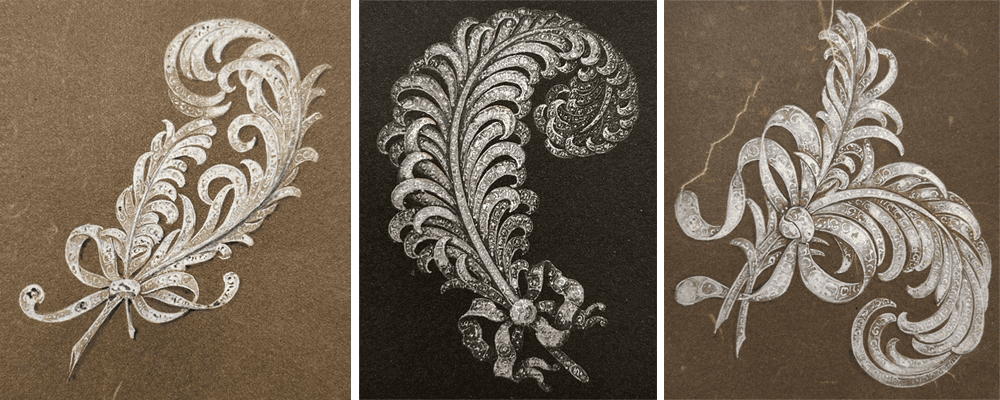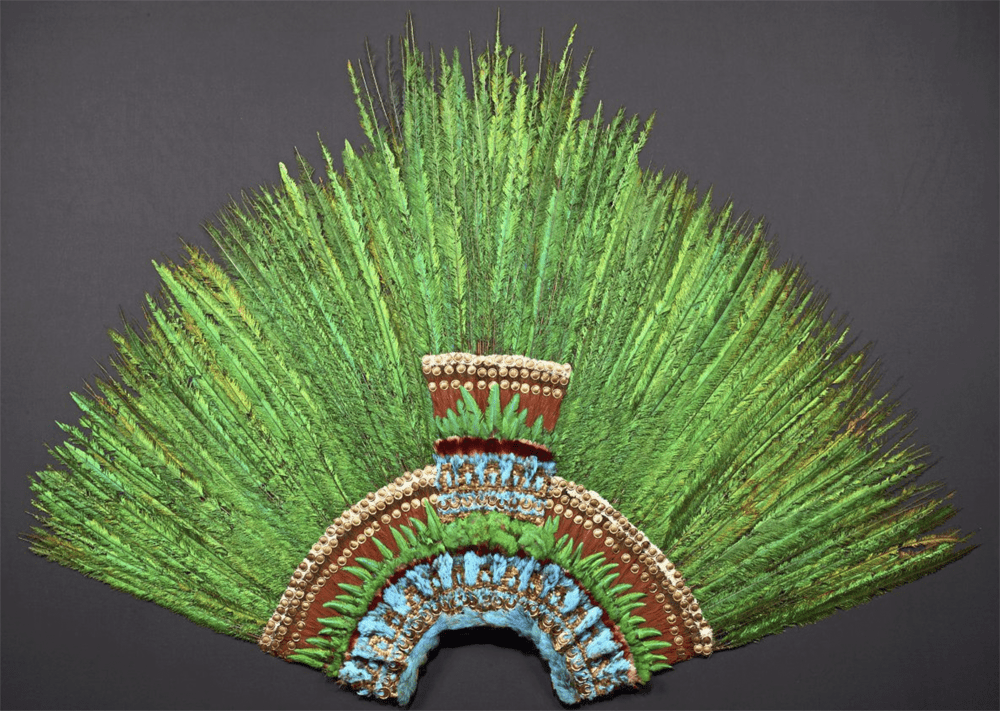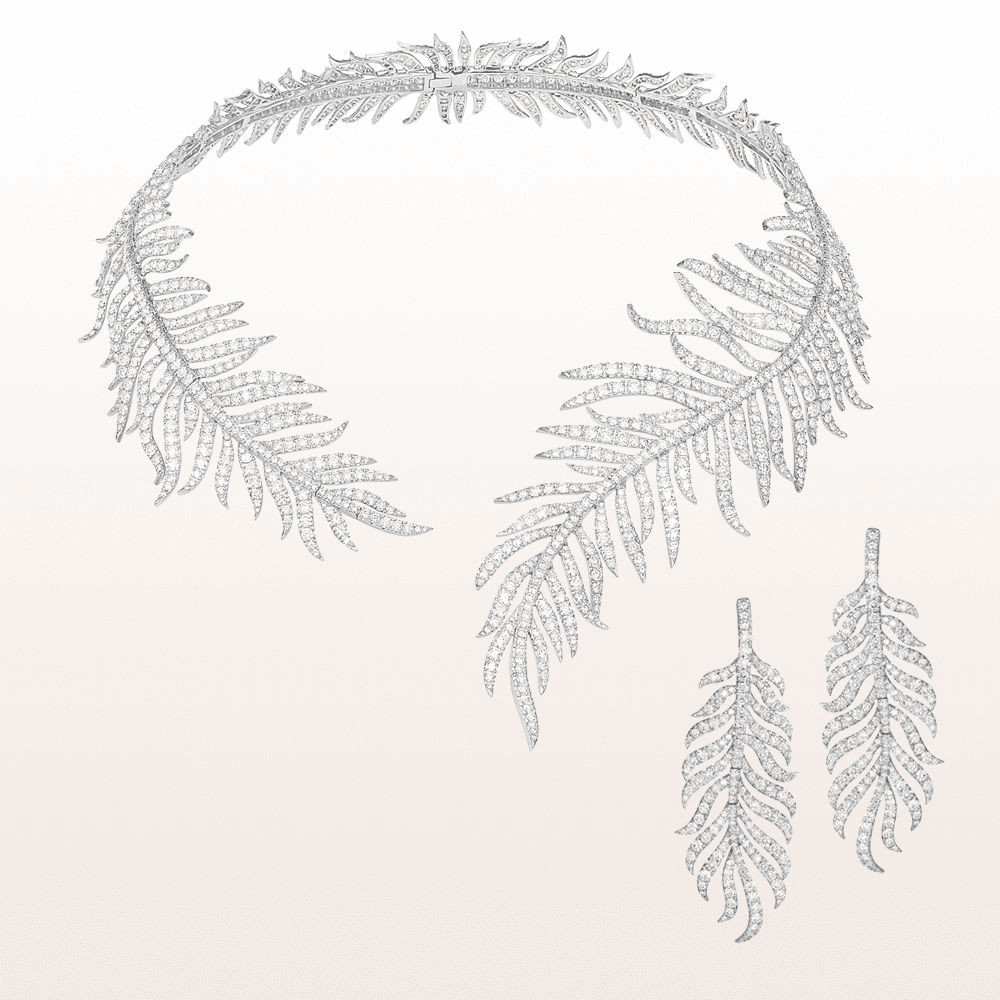
Feathers to Adorn – and Adore
Pheasant feathers are worn boldly by the hunter. They once were used as decorative helmut plumes by the Romans. And throughout military history, these feathers were indispensable right up until the end of the 19th century. But the discovery of the New World brought new inspiration. Native American chiefs such as Sitting Bull allegedly paid the equivalent of a good horse for 10 eagle feathers. In fact, among the North American ethnic groups, eagle feather hunting was practically a profession.
In European salons and drawing rooms, ladies warmed themselves – and others – with feather boas, while heron feathers adorned the hats of gentlemen as well as the ladies. And nearly every soirée, especially in those days, saw the fluttering of feathered fans.

For Köchert – the Imperial and Royal Court jewellers to the Habsburgs – it was somewhat of a challenge to transform the delicate feather into something precious and enduring. Perhaps one influence came from an ethnographic gem, the feather headdress of Moctezuma II, that had been in the newly created Naturhistorisches Museum (Museum of Natural History) in Vienna since 1880.

Even if opinions differ as to whether the Central American artifact actually came from the casket of the prince, it is a true masterpiece, utterly unique in the world. Its origin is disputed, as is, of course, its ownership, but its beauty in gold and green, so skillfully crafted from the feathers of the quetzal, is indisputable. This feathered crown first appeared in 1596 in a cabinet of curiosities at Ambras Castle in Tyrol, Austria. At the beginning of the 19th century, it was brought to Vienna. Decades later, in 1928, following its stay at the Museum of Natural History, the headdress was transferred to the Völkerkundemuseum (Museum of Ethnology) – now known as the Weltmuseum, or World Museum – on Vienna’s Heldenplatz, where the piece can still be admired today.

The jewellers of the House of Köchert began creating wearable feather designs – such as the stunning brooch for Marie Valerie, the youngest daughter of Empress Elisabeth. Diamonds and Burma rubies accentuate the sweep of this piece, which is crowned by an oriental pearl that’s as precious today as it was then – and in a setting worthy of the lovely archduchess.

The archives of Maison Köchert contain several other feather designs that inspired the jewellers to revive the tradition at the beginning of the new millennium. One of these new creations is a feather necklace that nestles so gently, seemingly weightless, around the wearer’s neck; the swan neck shape of the piece is no coincidence. Fans of this necklace include an elegant Monegasque beauty. Perhaps you’ll meet her at the Rose Ball in Monaco.



